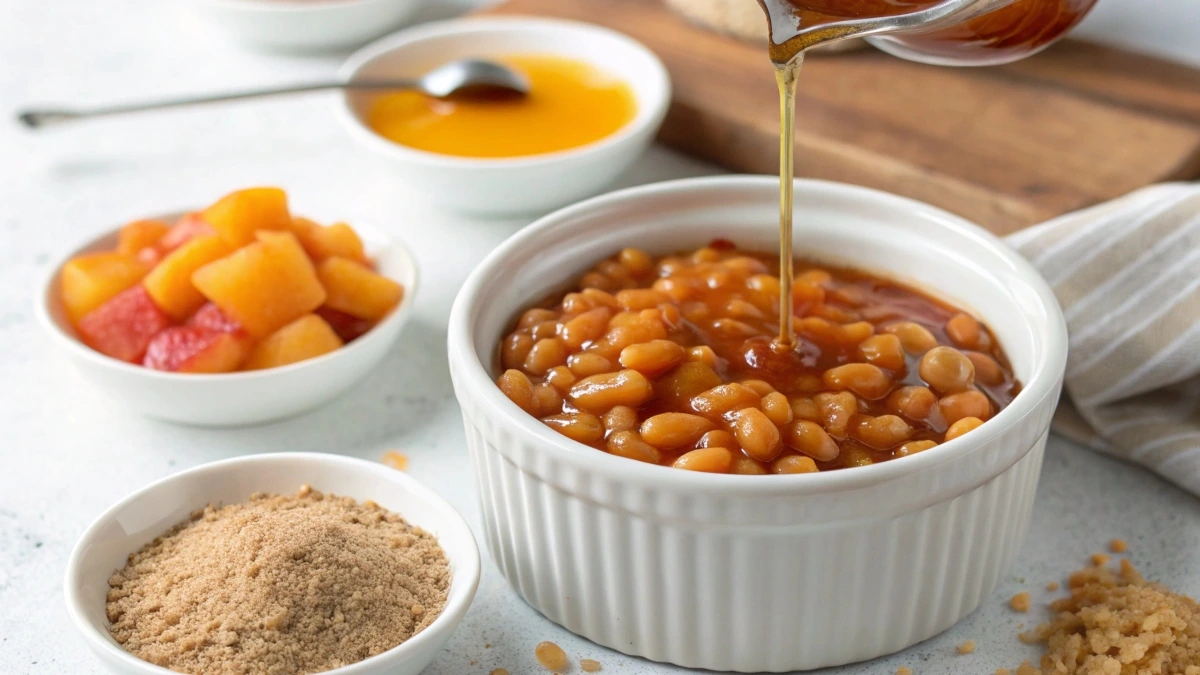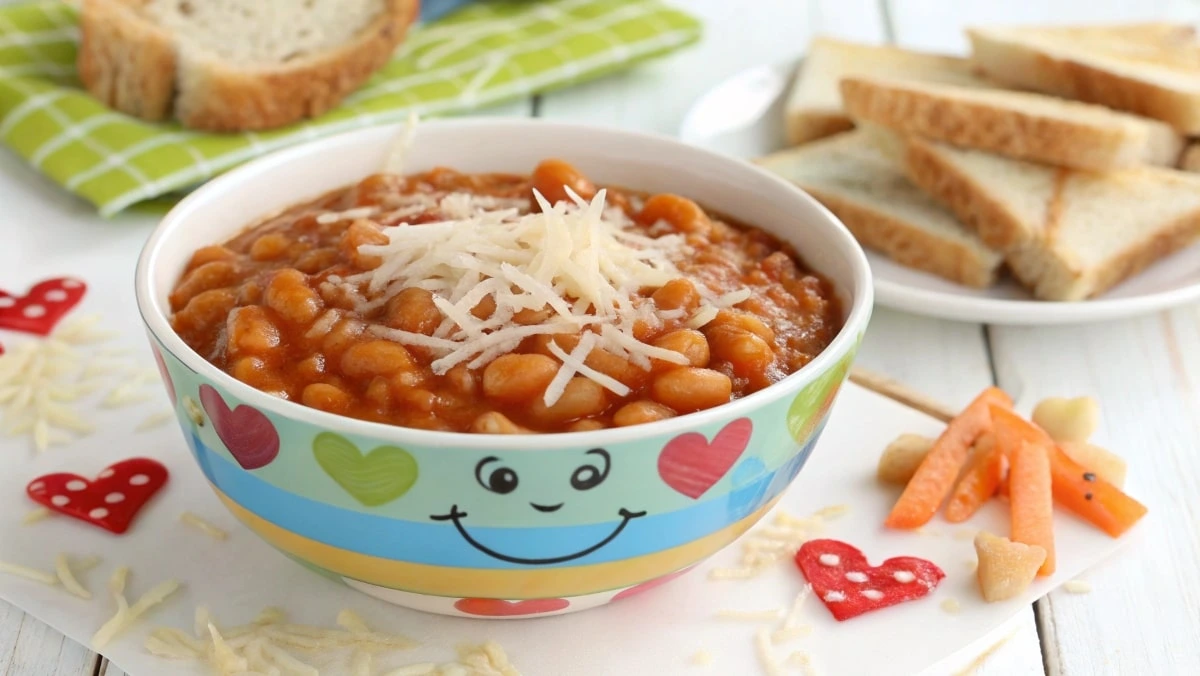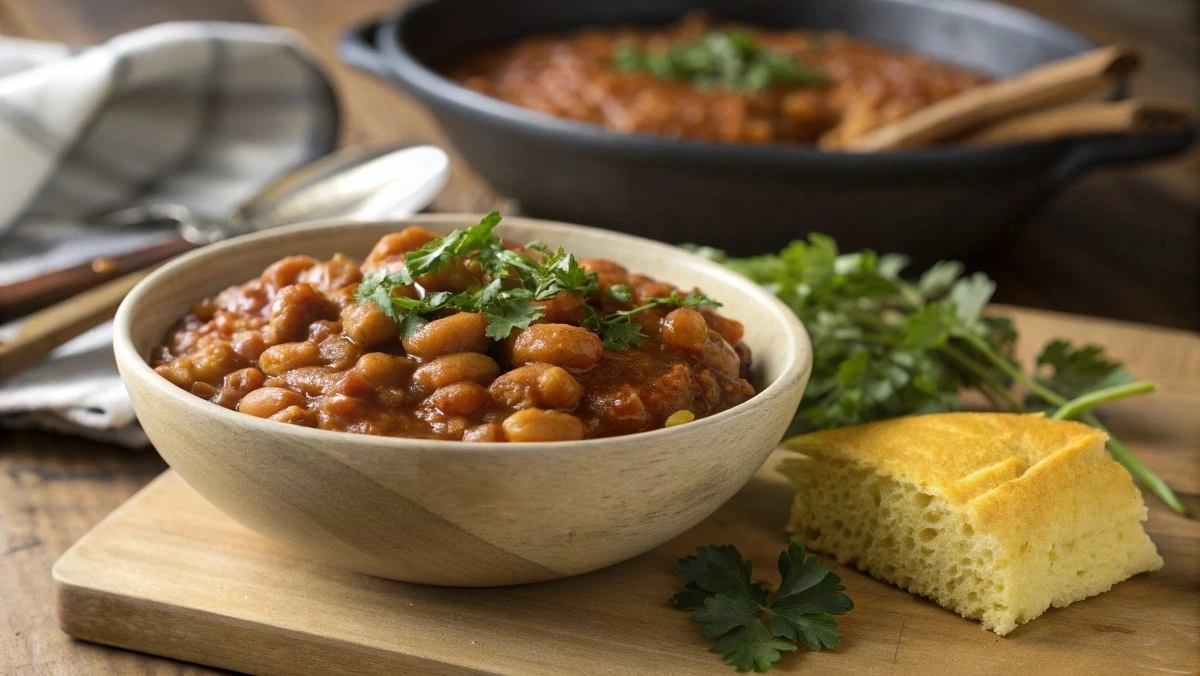Baked beans are a classic dish beloved by many, but they often need a touch of creativity to truly stand out. Have you ever wondered, What can I add to baked beans for flavor? Elevating this humble dish starts with understanding what can I add to baked beans for flavor, transforming it into a culinary masterpiece. By combining sweet, savory, and spicy elements with creative techniques, you can craft baked beans that please every palate.
From incorporating unique ingredients to experimenting with regional twists, this guide covers everything you need to know to make your baked beans unforgettable.
Why Enhance Baked Beans?
Many people rely on baked beans straight from the can, which can be bland and uninspiring. Learning what can I add to baked beans for flavor not only improves their taste but also ensures they pair better with other dishes.
Reasons to Enhance Baked Beans:
- Flavor variety: Store-bought beans often lack depth, and adding your twist can make them more exciting.
- Personalized taste: Adjusting sweetness, spice, or savoriness caters to your preferences.
- Nutritional value: Enhancements such as vegetables or protein-rich ingredients boost the dish’s health benefits.
Furthermore, transforming baked beans lets you experiment with textures and flavors, turning them into a family favorite.
Sweet Additions for a Richer Taste
Sweet flavors enhance baked beans by balancing their natural savoriness. Adding a touch of sweetness not only elevates the dish but also makes it more versatile, complementing various cuisines and palates. Whether you’re preparing baked beans for a casual family meal or a special gathering, sweet additions can transform them into a memorable dish that stands out.
Sweeteners bring warmth and richness to the beans, often enhancing their inherent flavors. While the base sweetness of most canned baked beans is subtle, additional sweet ingredients can create a more robust flavor profile. However, achieving the perfect balance is essential to prevent the dish from becoming overly sweet and cloying.
Popular Sweeteners to Add
Brown sugar or maple syrup: These classic choices add a rich, caramel-like flavor that beautifully complements the beans. Brown sugar melts into the sauce, creating a velvety texture, while maple syrup offers a deep, earthy sweetness with hints of smokiness. When combined with savory elements, they form an irresistible sweet-and-savory balance.
Honey: This natural sweetener provides a light, floral sweetness that feels fresh and elegant. Its mild flavor allows the other ingredients to shine while subtly enhancing the dish’s overall appeal. Honey also has a unique ability to bind flavors, making it a great addition when combining sweet and savory elements.
Fruit-based additions: Pineapple juice, applesauce, or diced peaches can introduce a fruity twist to your baked beans. Pineapple juice adds a tangy sweetness, applesauce offers a smooth texture with subtle sweetness, and diced peaches provide bursts of flavor and a touch of juiciness. These options work particularly well for summer gatherings or as a complement to grilled dishes.

Tips for Perfect Sweetness
When using sweet ingredients, it’s crucial to consider the overall balance of flavors. Too much sugar can overwhelm the dish, masking the beans’ natural taste and overshadowing other enhancements like spices or herbs. Aim to add small amounts of sweeteners incrementally, tasting as you go, to achieve just the right level of sweetness.
Pairing sweet additions with a hint of acidity, such as a splash of vinegar or a squeeze of lemon juice, can further enhance the flavor profile. This combination ensures that the sweetness is lively and balanced rather than overly rich. With careful attention to balance and creativity, you can create baked beans that are perfectly sweet, flavorful, and satisfying.
Savory Enhancements for Depth
Savory flavors add richness and make baked beans a heartier dish. To achieve this, incorporating umami-packed ingredients is key.
Savory Ingredients to Try:
- Onions and garlic: Sauté them before mixing to add depth and aroma.
- Soy sauce or Worcestershire sauce: Both deliver bold umami flavors.
- Meat options: If you consume meat, smoked sausage or ground beef can significantly enhance the flavor profile.
For vegetarians, mushrooms or liquid smoke offer similar savory depth without animal products.
Spices and Herbs to Elevate Flavor
Spices and herbs can completely transform baked beans, taking them from simple to sophisticated.
Recommended Spices and Herbs:
- Chili powder and cayenne: For those who enjoy a bit of heat.
- Mustard and paprika: These add a tangy zest and mild smokiness.
- Fresh herbs: Parsley, cilantro, or thyme can add a refreshing finish to the dish.
When using spices, remember to taste frequently and adjust quantities to ensure a balanced flavor.
Unique Ingredients to Try
If you’re feeling adventurous, adding unconventional ingredients can make your baked beans truly unique.
Creative Additions:
- Coffee: A splash of brewed coffee adds boldness and enhances the beans’ natural earthiness.
- BBQ sauce: This sweet and smoky addition pairs beautifully with baked beans.
- Toasted breadcrumbs: They add a crunchy texture and a subtle nutty flavor.
By experimenting with these ingredients, you can discover new and exciting ways to enjoy baked beans.
Enhancing Texture and Appearance
Great dishes aren’t just about flavor—they’re also about texture and presentation. Making baked beans visually appealing can elevate their dining experience.
Tips for Texture and Appearance:
- Cheese: Adding shredded cheddar or mozzarella on top creates a creamy layer.
- Vegetables: Roasted bell peppers or diced carrots enhance both texture and nutrition.
- Garnishes: Fresh herbs or a sprinkle of paprika can add vibrant color.
A dish that looks as good as it tastes will always be a hit at the dinner table.
Popular Regional Twists
Baked beans are enjoyed worldwide, with each region adding its unique flair. Incorporating these styles can inspire your cooking.
Regional Variations:
- Southern-style baked beans: Molasses and bacon create a rich, sweet, and smoky profile.
- British-style baked beans: A tomato-based sauce and milder seasoning are typical in this version.
- Mediterranean baked beans: Olive oil, garlic, and rosemary bring a fresh and earthy twist.
These variations highlight how versatile baked beans can be when combined with global flavors.
Tips for Pairing Baked Beans with Other Dishes
Baked beans are a versatile dish that pairs well with a variety of meals. Whether as a side or main course, they can enhance any dining experience.
Pairing Suggestions:
- With toast or cornbread: A classic comfort food combination.
- As a BBQ side dish: Perfectly complements smoky, grilled meats.
- In casseroles: Combine with other ingredients for a hearty, all-in-one meal.
Finding the right pairing ensures that your baked beans shine in every meal.
Making Baked Beans Kid-Friendly
If you’re preparing baked beans for children, it’s important to adjust flavors and presentation to suit their preferences. Kids often have sensitive taste buds, making overly spicy or bold flavors a challenge for them. By tweaking the recipe to make it more appealing and fun, you can turn baked beans into a dish they’ll love to eat.
Baked beans are naturally a good source of nutrients, including fiber and protein, which makes them a healthy choice for growing children. However, incorporating playful elements and mild, familiar flavors ensures they’ll enjoy the meal while getting the benefits.

Kid-Friendly Tips:
Reduce spice levels: Keep the dish mild by omitting strong spices like cayenne pepper or chili powder. Instead, use gentle seasoning such as a pinch of paprika or a touch of garlic powder to add flavor without overwhelming young palates.
Add sweetness: Kids often gravitate toward sweeter flavors. A little extra brown sugar, honey, or maple syrup can make baked beans more appealing to them. These natural sweeteners create a balance between savory and sweet, enhancing the dish while keeping it kid-approved.
Fun shapes and presentation: Make the meal exciting by serving baked beans with fun shapes. For example, use cookie cutters to cut bread or toast into stars, hearts, or animal shapes. You can also serve the beans in colorful bowls or use a creative topping arrangement, like a smiley face made with shredded cheese or vegetables.
Incorporate familiar ingredients: If your child has a favorite food, consider incorporating it into the baked beans. For example, mix in diced hot dogs, shredded chicken, or small pasta shapes for a dish that feels familiar yet exciting. Familiar ingredients help reduce hesitation when trying something new.
Serve as a dip: Transform baked beans into a fun finger food by blending them slightly and serving as a dip with crackers, veggie sticks, or tortilla chips. This interactive approach can make mealtime more enjoyable and encourage children to eat more.
Focus on texture: Kids often prefer smoother textures, so consider mashing some of the beans lightly to create a creamier consistency. You can also mix in a little cream or cheese to make the dish extra comforting.
With these adjustments, baked beans can quickly become a hit with even the pickiest eaters. By tailoring the flavors and making the dish visually appealing, you ensure it’s both nutritious and enjoyable for children.
How to Store and Reheat Enhanced Baked Beans
Proper storage and reheating techniques ensure that your enhanced baked beans remain delicious for leftovers.
Storage Tips:
- Refrigeration: Store in an airtight container for up to 3-4 days.
- Freezing: Freeze in portions for up to three months for easy future meals.
Reheating Tips:
- Stovetop: Heat on low with a splash of water or broth to prevent drying out.
- Microwave: Use a microwave-safe dish and cover to retain moisture.
By following these methods, your baked beans will remain flavorful and satisfying.
FAQs About Enhancing Baked Beans: Everything You Need to Know
Can I make baked beans vegan-friendly?
Yes, baked beans can easily be made vegan-friendly! Start with a can of plain baked beans or cook dried beans from scratch. Replace any animal-based ingredients, such as bacon or butter, with plant-based alternatives. For a smoky flavor, use liquid smoke or smoked paprika. Add vegetables like onions, peppers, and garlic to enhance the dish, and sweeten it naturally with maple syrup or agave. You can also use vegan Worcestershire sauce for a boost of umami.
What’s the best sweetener to use?
The best sweetener depends on your preferred flavor profile. Brown sugar is a popular choice, offering a caramelized richness that pairs well with savory beans. Maple syrup provides a natural, smoky sweetness, while honey (if not vegan) adds a light, floral touch. For a fruity twist, try pineapple juice or applesauce. Each sweetener brings its own unique character, so experiment to find what works best for your taste.
How do I balance sweet and savory flavors?
Balancing sweet and savory flavors is all about creating harmony. Start with small amounts of sweeteners like brown sugar or honey, then taste and adjust. To offset sweetness, add savory ingredients such as soy sauce, Worcestershire sauce, or a pinch of salt. A splash of apple cider vinegar or lemon juice can add acidity, further balancing the flavors. Combining herbs and spices, such as paprika or thyme, can also create a more complex and satisfying taste profile.
Can I enhance baked beans in a slow cooker?
Absolutely! A slow cooker is a great way to enhance baked beans, as the slow cooking process allows flavors to meld beautifully. Begin by sautéing aromatic ingredients like onions, garlic, and peppers, then add them to the slow cooker along with the beans and your chosen seasonings. Sweeteners like molasses or maple syrup, along with savory elements like mustard or liquid smoke, work particularly well in slow-cooked beans. Cook on low for 4–6 hours or high for 2–3 hours, stirring occasionally.
Are canned baked beans as good as homemade?
Canned baked beans are convenient and can be delicious with a little enhancement, but homemade baked beans offer greater flexibility and depth of flavor. While canned beans often have a uniform taste, homemade versions allow you to control the seasoning, sweetness, and texture. If time is short, start with canned beans and customize them with fresh ingredients and spices. For a truly rich flavor, consider making baked beans from scratch using dried beans and a slow-cooked sauce.
How can I make baked beans from scratch?
Making baked beans from scratch is easier than you might think. Start by soaking dried beans overnight, then cook them until tender. Prepare a flavorful sauce with ingredients like tomato paste, brown sugar, molasses, mustard, and Worcestershire sauce. Combine the beans and sauce in a pot or slow cooker, and let them simmer on low heat for several hours, stirring occasionally. The result is a rich, deeply flavorful dish that’s well worth the effort.
What can I add to canned beans to make them taste better?
To elevate canned beans, start by sautéing onions, garlic, and bell peppers in a little olive oil. Add the beans and season them with spices like paprika, chili powder, or thyme. Sweeteners such as brown sugar or maple syrup, combined with savory ingredients like soy sauce or Worcestershire sauce, can create a balanced flavor. For extra richness, stir in a dollop of BBQ sauce or mustard. Garnish with fresh herbs like parsley or cilantro for a fresh finish.
By following these tips and tricks, you can transform baked beans into a flavorful and versatile dish, whether you’re working with canned beans or making them from scratch.
Conclusion
Enhancing baked beans is a simple yet rewarding process. By asking yourself, What can I add to baked beans for flavor? you open the door to countless possibilities. Whether you prefer sweet, savory, or spicy, there’s a way to make baked beans your own. With a bit of creativity and the tips in this guide on what to add to baked beans, you can turn this humble dish into a crowd-pleasing favorite.
By following this guide, you can turn baked beans into a crowd-pleasing favorite. If you want to make this recipe step by step, click here.
Happy cooking!

